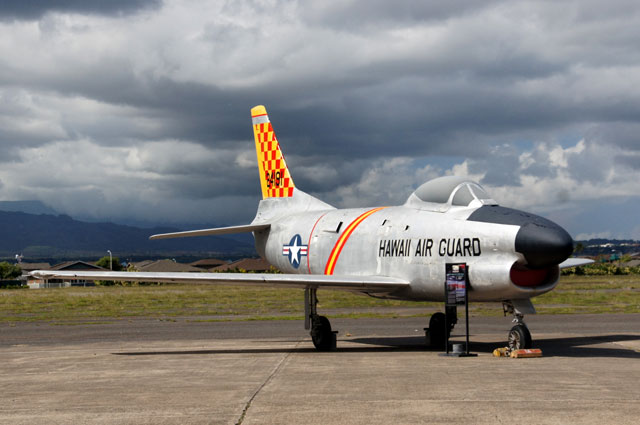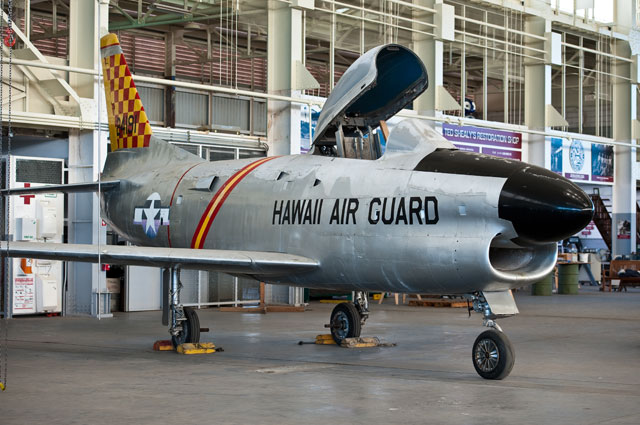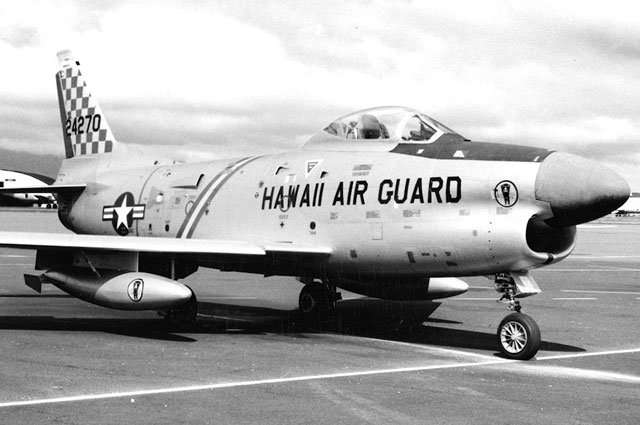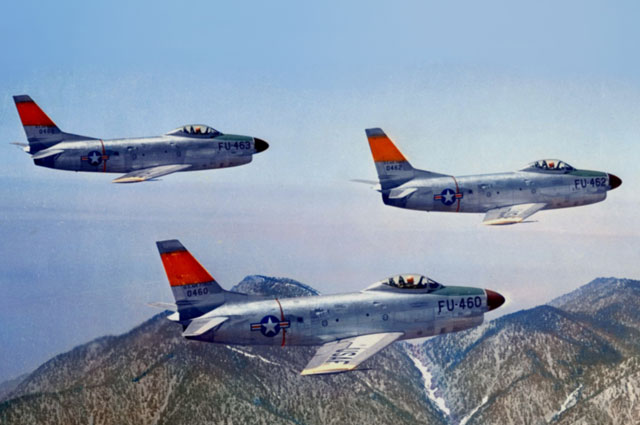
North American Aviation F-86L Sabre (Interceptor)
Snapshot
- Nickname:
- Sabre-dog
- Number Built:
- 9,860
- Make:
- North American Aviation
- Mission:
- Interceptor
- Location:
- The Raytheon Pavilion & Outdoor Exhibits
Background
The F-86D first flew on December 22, 1949. It was developed as an all-weather interceptor version of the formidable F-86A. The F-86D was used in the 1950s to guard against enemy air attack, both in the United States and overseas. Over 2500 of the F86- D models were produced.
The F-86D is well-known for historic firsts. It was the first U.S. Air Force aircraft to have all-rocket armament. It was also the first all-weather interceptor with a one-man crew to pilot the aircraft and to operate the radar fire control system. The F-86D set new world speed records of 698 mph in November 1952 and 715 mph in July 1953.
The F-86L is an updated version of the F-86D Sabre. The newer version utilized longer-span slatted wings to improve high altitude performance and maneuverability. Smaller wings previously caused this to be a weak point of the Sabre series. The F-86L was equipped with onboard data-link to the Semi-Automatic Ground Environment (SAGE) air defense system. SAGE was the first computer war system developed; it allowed more accurate all-weather, day or night interceptions.
Specs
- Contractor
- North American Aviation
- Deployment Date
- First flight, October 1947; Operational 1949
- Span
- 37 feet
- Length
- 37 feet, 6 inches
- Height
- 14 feet, 8 inches
- Weight
- 16,350 lbs
- Max. Speed
- 675 MPH
- Service Ceiling
- 48,300 feet
- Range
- 360 miles
- Crew
- 1








